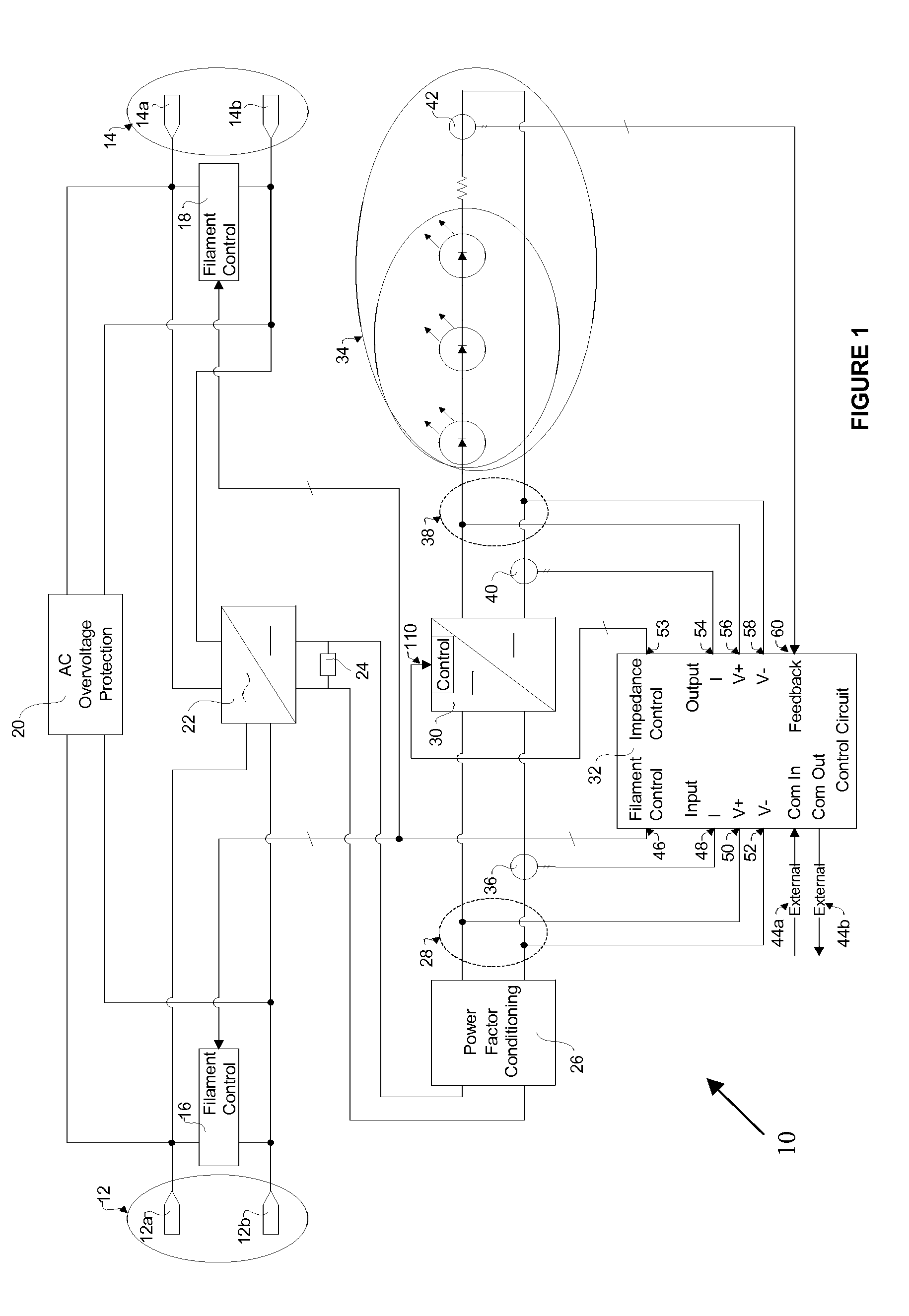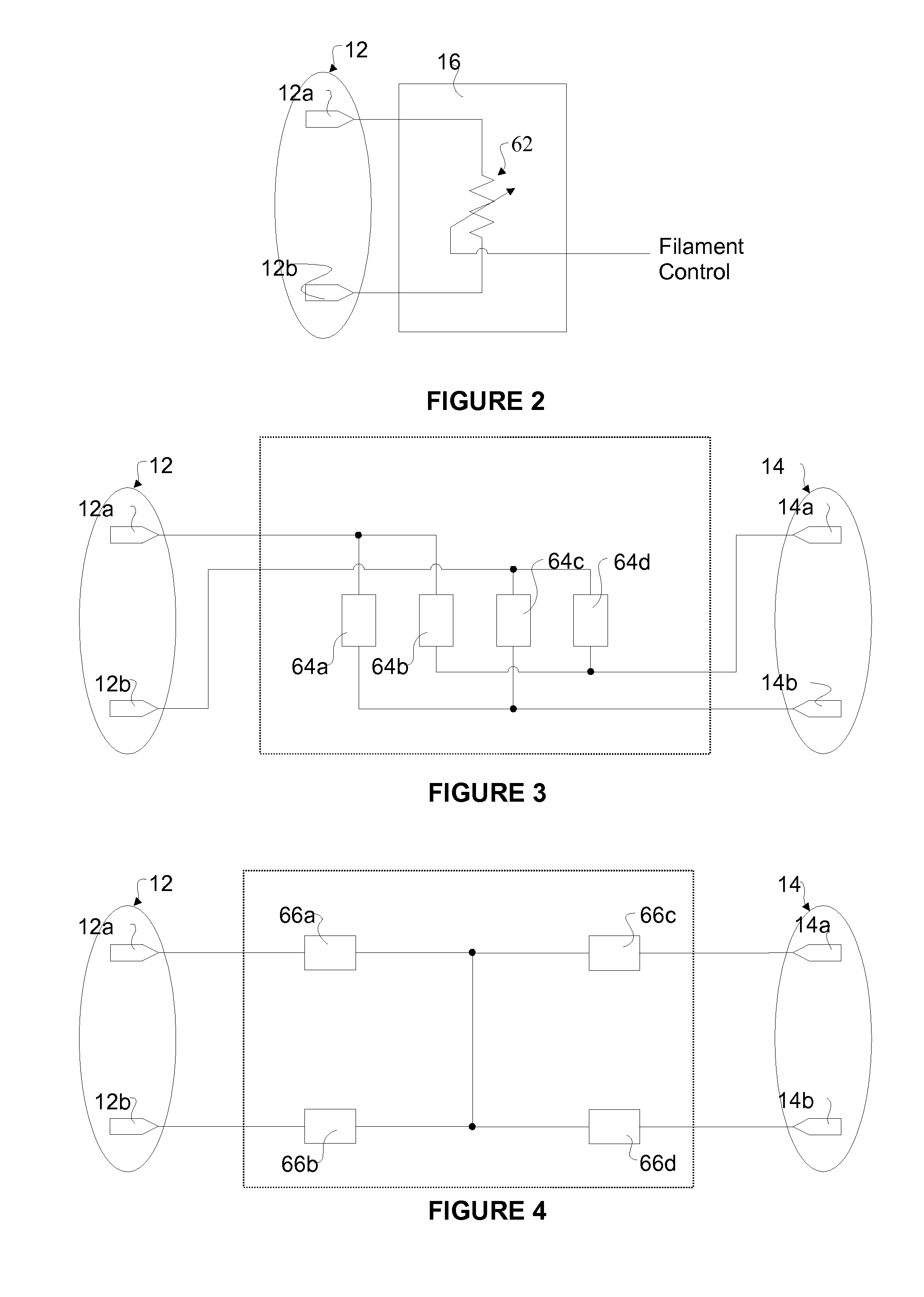Impedance controlled electronic lamp circuit
a technology of electronic lamp circuit and impedance control, which is applied in the direction of electric variable regulation, process and machine control, instruments, etc., can solve the problems of increasing negative resistance, increasing ballast output voltage, and inability of ballast to properly drive such a load
- Summary
- Abstract
- Description
- Claims
- Application Information
AI Technical Summary
Benefits of technology
Problems solved by technology
Method used
Image
Examples
Embodiment Construction
[0027]Turning to FIG. 1, a schematic diagram of an impedance controlled electronic lamp circuit is shown. In the preferred embodiment, the circuit 10 comprises a first, power source, or ballast connector 12 including a first, power source, or ballast connection 12a and a second, power source, or ballast connection 12b which form a two pin connector for connection to the ballast output of a first filament of the lamp and a second, power source, or ballast connector 14 including a first, power source, or ballast connection 14a and a second, power source, or ballast connection 14b which form a two pin connector for connection to the ballast output for a second filament of the lamp. The first ballast connector 12 and the second ballast connector 14 provide an apparatus or means to electrically connect the circuit 10 to form a connection between the circuit 10 to the lamp output. In one embodiment, this can be implemented via a suitable connector or a set of lead wires. In a preferred em...
PUM
 Login to View More
Login to View More Abstract
Description
Claims
Application Information
 Login to View More
Login to View More - R&D
- Intellectual Property
- Life Sciences
- Materials
- Tech Scout
- Unparalleled Data Quality
- Higher Quality Content
- 60% Fewer Hallucinations
Browse by: Latest US Patents, China's latest patents, Technical Efficacy Thesaurus, Application Domain, Technology Topic, Popular Technical Reports.
© 2025 PatSnap. All rights reserved.Legal|Privacy policy|Modern Slavery Act Transparency Statement|Sitemap|About US| Contact US: help@patsnap.com



